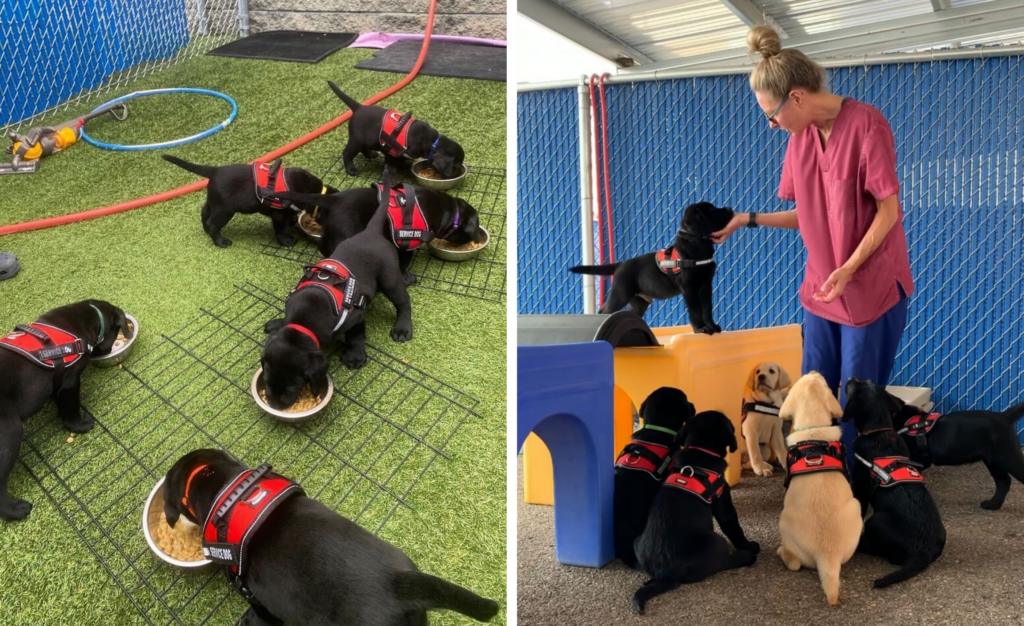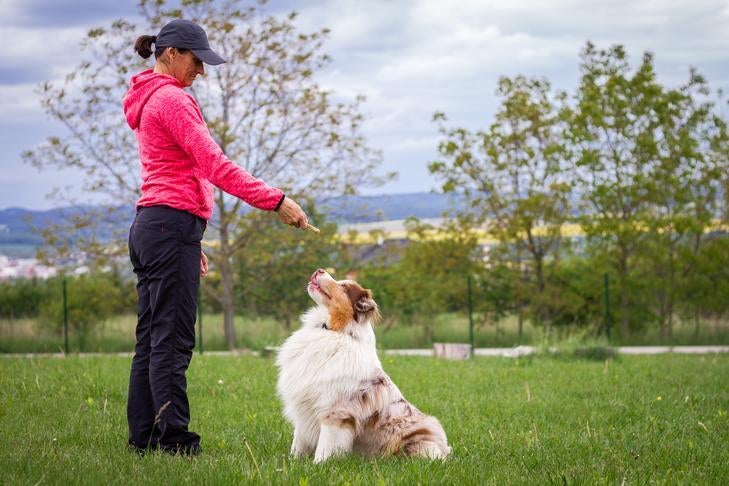Essential Tips for Successful Dog Training: A Guide for Beginners
Essential Tips for Successful Dog Training: A Guide for Beginners
Blog Article
Top Canine Educating Methods Every Owner Ought To Know

Favorable Support Techniques
Utilizing favorable support methods is crucial for reliable canine training, as it fosters a trusting bond between the trainer and the dog. This approach concentrates on satisfying preferable behaviors as opposed to punishing unwanted ones, developing a setting favorable to finding out. Rewards can include deals with, praise, or play, which motivate pet dogs to repeat the actions that make them these incentives.

Moreover, this approach enhances the canine's excitement for training sessions. When pet dogs associate training with favorable experiences, they are a lot more engaged and receptive. Beyond prompt therapy, favorable reinforcement encourages a joint relationship between the canine and fitness instructor, reducing anxiousness and concern
To optimize efficiency, it is essential to supply rewards without delay, making sure the dog links the actions with the reinforcement. In significance, favorable support strategies not only yield better-trained canines yet likewise promote an unified partnership between canine and proprietor.
Remote Control Training Approach
The clicker training technique is a very reliable technique that builds upon the concepts of favorable reinforcement by adding an unique noise to mark desired actions. This technique uses a little portable device that generates a clicking sound, allowing instructors to connect with their canines in a instant and clear manner. When a dog carries out an actions that the proprietor desires to encourage, the clicker is turned on, adhered to by a benefit, normally in the form of deals with or appreciation.
The trick to successful clicker training hinges on consistency and timing. It is crucial to click at the specific moment the preferred habits occurs, making sure that the canine associates the noise with the activity and the succeeding incentive. This approach not just boosts communication but additionally cultivates a more powerful bond in between the owner and the pet, as it encourages involvement and interaction throughout training sessions.
Clicker training can be applied to a variety of commands and actions, from fundamental obedience to much more intricate techniques. Its versatility and performance make it a favored strategy among expert trainers and animal proprietors alike, leading the way for a receptive and trained canine companion.
Chain Training Essentials
Effective chain training is essential for ensuring a safe and pleasurable walking experience for both pet dogs and their owners. Dog training. Chain training should begin early and be approached with perseverance and consistency. Start by picking a suitable chain and collar or harness. A level collar might benefit some pet dogs, while others might gain from a harness that lowers drawing.
Present your pet to the chain gradually, allowing them to explore it in a comfy environment. Once they are accustomed, method loose-leash walking. This includes fulfilling your canine for walking close to you as opposed to drawing in advance. Usage deals with and praise to strengthen wanted behavior, and be sure to continue to be tranquil and assertive.
If your dog begins to pull, stop strolling promptly. Additionally, method various strolling settings to assist your canine adapt to distractions.
Routine technique will certainly strengthen your pet's understanding of leash etiquette. Keep in mind that leash training is an these details ongoing process; perseverance and consistency will yield the most effective outcomes, cultivating a positive experience for both you and your canine buddy.
Socializing Strategies
Socialization is a vital aspect of pet dog training that must ideally start throughout puppyhood but can be beneficial at any age. Efficient socialization aids canines view publisher site develop self-confidence and decreases the likelihood of behavioral concerns. To implement successful socialization approaches, subject your pet to a range of atmospheres, individuals, and other pets.
Begin with controlled settings, such as puppy courses or arranged playgroups, where young pets can connect safely. Slowly introduce your pet to new experiences, including various noises, surface areas, and activities. Ensure these experiences are gratifying and favorable to develop a complacency.
For grown-up dogs or those lacking direct exposure, begin with low-stress circumstances. Short, positive communications with tranquil canines and pleasant humans can produce positive associations. Use deals with and praise to reinforce preferable behaviors throughout these experiences.

Consistency and Patience
Identifying the relevance of uniformity and patience in pet dog training is necessary for attaining long-term outcomes. Inconsistent training can lead to complication, making it tough for the pet dog to realize behaviors or commands, eventually impeding progression.
Pet dogs, like people, learn at their own speed. This promotes a relying on connection between the canine and proprietor, urging a much more prepared and passionate student.
To cultivate consistency and persistence, establish a regular check it out training routine, utilize the very same commands, and guarantee that all relative use the very same training concepts - Dog training. By doing so, you develop a stable setting helpful to finding out, permitting your pet dog to prosper and create into a well-behaved friend
Verdict
Finally, effective canine training methods, such as positive support, remote control training, and appropriate chain training, are essential for promoting a healthy and balanced owner-dog connection. Furthermore, carrying out socializing methods and maintaining consistency and patience throughout the training procedure contributes significantly to a pet dog's total health. By incorporating these methods, dog owners can facilitate the development of well-adjusted, loyal family pets, ultimately improving the lifestyle for both the owner and the canine.
Among the most popular approaches are positive support, clicker training, and chain training, each offering special advantages that add to a well-behaved dog. As we explore these fundamental approaches, it becomes evident that grasping their subtleties can dramatically affect the training experience and the dog's general habits.Making use of positive support techniques is important for reliable pet training, as it cultivates a trusting bond between the pet dog and the trainer.In verdict, efficient dog training techniques, such as favorable reinforcement, remote control training, and correct chain training, are necessary for cultivating a healthy owner-dog partnership. By incorporating these approaches, dog owners can help with the advancement of well-adjusted, loyal pets, eventually enhancing the top quality of life for both the canine and the owner.
Report this page